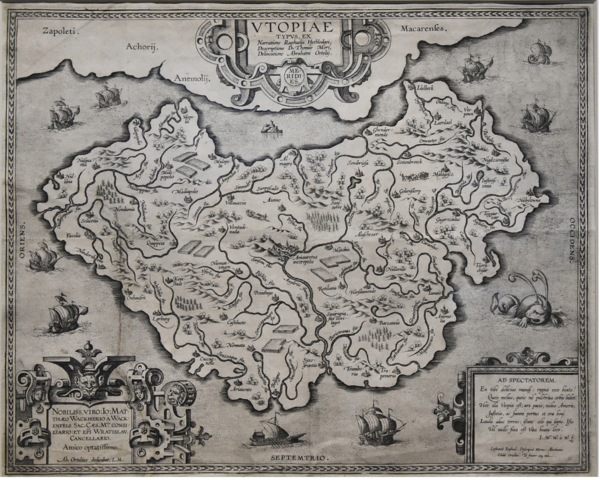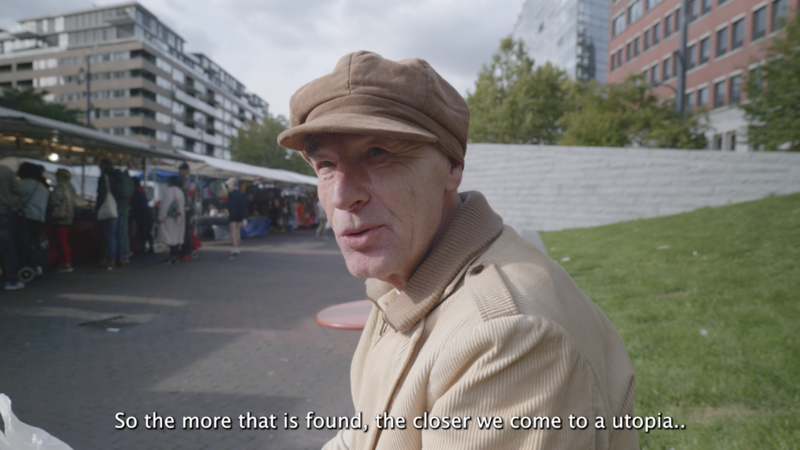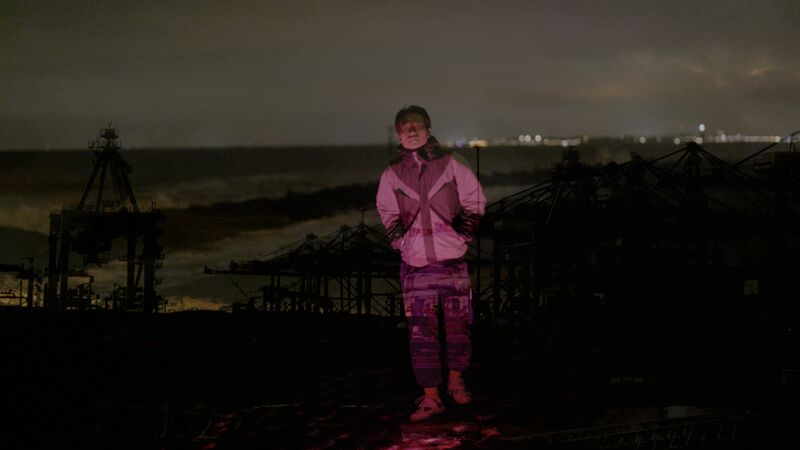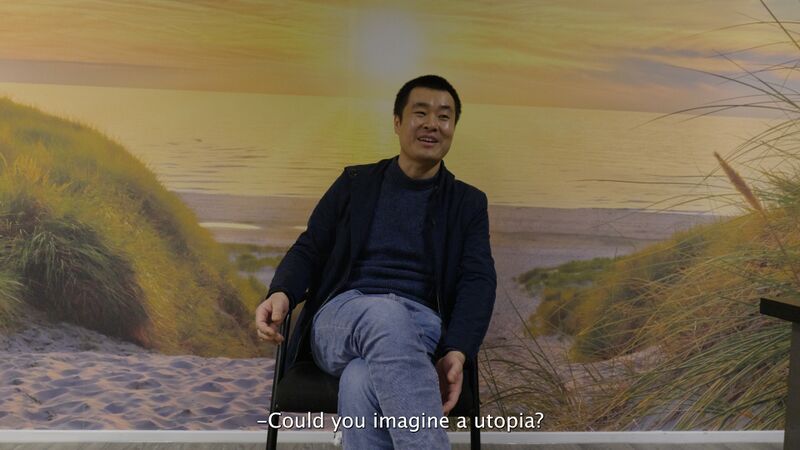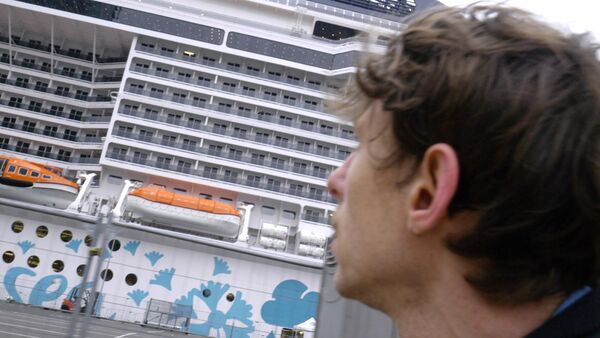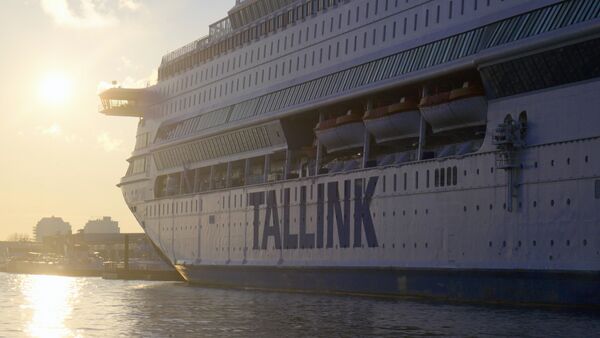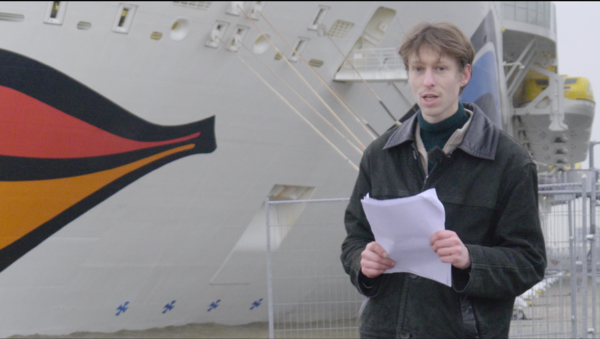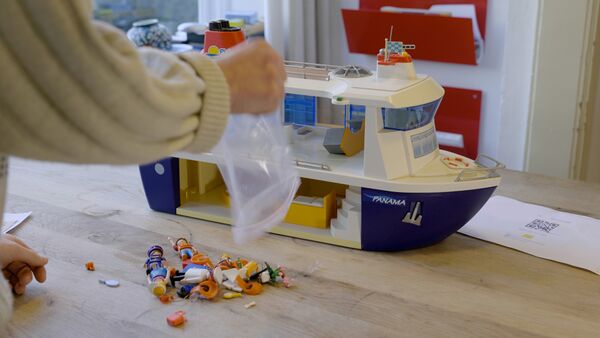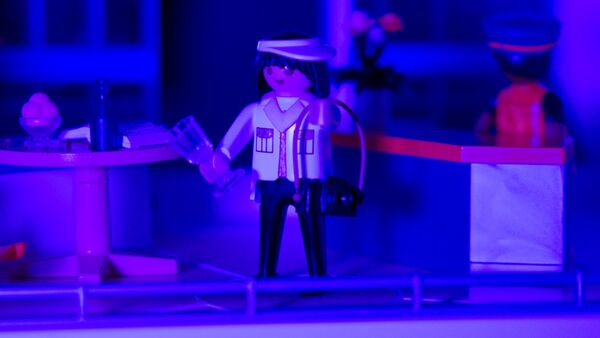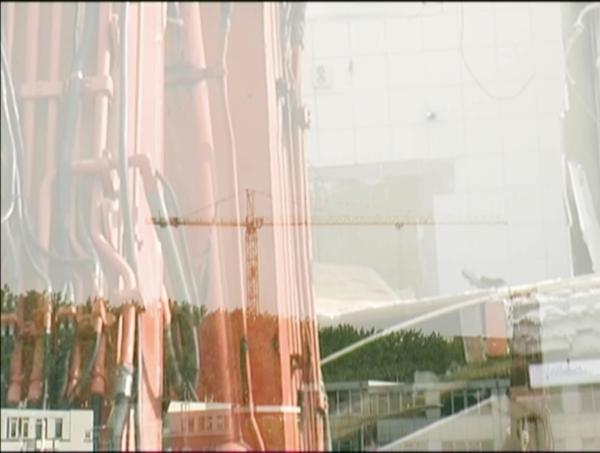Toto's latest version
A Humble endeavor.
To create something meaningful and to share my journey, and obstacles throughout creating, reflecting, and positioning myself during the first two semesters studying LBM. I have created several video works, most of which can be described as non-fiction, socially engaged, reflective, and nonlinear. An exemplary work for my self-directed research was a short film called 'The Cruise from Tallinn’, which explored conflicting narratives surrounding cruise ships in Rotterdam in a playful manner. This film was created for the Eye Research Lab and allowed me to experiment with new methodologies in my practice as a (film)maker. However, before diving into this project, I initially started out on the concept of Utopia and went through several iterations before completing my film for the Eye Research lab.
Typically, my artistic projects start with a visual inspiration, such as an image or a concept, and evolve from there. Contrary to starting visually, the first semester I began with a concept: the exploration of Utopia.
In a time of turmoil and inequality, I have the feeling that I am neither the cause nor the solution to these problems that are a threat to a lot of us. By this ambiguous feeling towards crises and being unsure of my role in solving them, I felt compelled to delve into the idea of Utopia as a form of hope or escapism. This desire for alternative realities and escape routes led me to research it and explore it through film and art. Additionally, the fantastical and unreachable nature of Utopia added to its appeal for a visual exploration.
Drawing on my background In journalism, I began by asking others about their visions of Utopia, seeking to understand how different people perceive this ideal world. Could they envision a Utopia, a perfect world, that goes beyond just wealth in a capitalist society?
I conducted interviews at various public street markets to gather strangers' perspectives on this question. I was pleasantly surprised how many people wanted to engage and interact on this topic and the interviews led to the creation of a short video.
While I was initially pleased with the outcome, I realized that to capture a diverse range of viewpoints, I needed to interview a larger and more varied group of people. This approach felt it didn't align with the time constraints of the Eye Project, which limited videos to 3 to 4 minutes.
During this time, I also visited the port of Rotterdam with my classmate, Zhuang, as we were both intrigued by exploring this significant yet often overlooked location.
As I delved into the origins of the concept of utopia, I discovered the strong link to seafaring and the exploration of unknown territories, sparking fantasies of isolated islands with imaginative societies…
While examining the scenery of the port area, I attempted to draw connections to the idea of Utopia. However, the industrialized landscape seemed far from utopian. I was curious about the individuals operating the machinery: the workers, the seamen. Did they ever envision a utopia for themselves? Through a news article, I discovered a volunteer-run establishment that provided a sanctuary for seamen in a small village (Oostvoorne) near the port. During our second visit with Zhuang, a Chinese seaman agreed to participate in an interview. This led to a 20-minute conversation where he shared insights into his daily life at sea, his thoughts on his job, past and present, his time away from home, his aspirations, and his vision of utopia. While this encounter was incredibly meaningful to me, practical considerations and ethical concerns made it challenging to conduct multiple interviews with seamen in a short period of time. As a result, I decided to put this project on hold for the time being.
However, I still have the contact details of the seaman we interviewed,
and an already discussed idea for the future is : to exchange our day-to-day life experience by self shot phone videos. Hopefully I can work on this in the upcoming semester.
At the same time, while still pondering utopia and the port, I rode my bike across the Erasmus bridge and spotted a massive cruise ship docked at the Wilhelminakade. This sight sparked a realization in me: cruise ships serve as spaces where a perfect world is recreated, a miniature utopia filled with all sorts of pleasures. Then, I also recalled that these same cruise ships have been used recently as temporary housing for refugees in Rotterdam. This strange paradox intrigued me instantly, and as I delved deeper into the topics of cruises, tourism, and refugees, I knew that the cruise ship would be the focal point of my EYE project.
I was captivated by some of these paradoxes I observed, particularly the different uses of cruise ships. The idea of traveling over the sea struck me, with cruise tourists seeking adventure while refugees are forced to leave their homes. In the Netherlands, right-wing politicians labeled refugees as "fortune seekers," but in reality are cruise tourists not the genuine ones seeking fortune? Exploring the history of the early cruise industry in Rotterdam, I discovered that many Europeans who migrated to the United States were also considered fortune seekers. These contrasting perspectives made me want to explore and visualize this peculiar reality.
I pondered how to merge these separate realities into one cohesive piece. Finally various methodologies are utilized in the creation of the final film, playing with different narratives to highlight the contrast between them. So the process of making the film felt like an exploration of methods and histories, as I navigated how to tell the story, provide guidance, and determine where to draw the line.
Initially, I took on the role of an observer, capturing images of the ships from a distance. I also wanted to engage in a participatory approach by conducting interviews. My original plan was to board the different ships to directly contrast the tourist cruise with the one housing refugees. However, accessing the refugee cruise at short notice proved to be impossible. Beside the practical challenges, there was a moral dilemma regarding the portrayal of vulnerable individuals in art projects. Cihad Caner proposed the idea of incorporating reenactment to address, play or find a solution with these ethical and practical concerns.
To push myself out of my comfort zone, I decided to try a new approach that I had never used in my previous non-fiction projects. I performed in the film as a presenter and took on the role of a neutral narrator.
Taking inspiration from Wendelien van Oldenborgh's work "No False Echoes, "In addition to use both observation and performance, I incorporated (another) playful element by using a miniature Playmobil cruise ship to further explore characterizations of cruise culture.
Throughout the film and performing in front of the screen, I recognized the importance of humor in addressing these complex issues.
Reflecting on my experiences in past semesters, I realized themes of self-confrontation, revelation, exploration, and humor. I found myself drawn to creating social impact through humor and playful reflections, while also grappling with the challenges of self-exploration and questioning my own position.
Throughout my projects, I consistently found myself looking for contradictions and interviewing others, as well as using observation to explore social clashes and paradoxes. This thematic exploration has been a common thread in my work, including the cruise ship film and other projects.
In the final film, humor became a key element to engage throughout the frictions. I knew I already had these humorous side but apart from fun I noticed it serves a very important function actually and I am more then willing to explore this in the future.
The eye project led me to new insights and reflections on different methodologies, prompting me to question how to incorporate additional perspectives into my work. Cihad Caner's seminar
challenged me to consider how art can create social impact and left me pondering the possibilities. Moving forward, I aim to refine my project and delve deeper into the questions it has raised. I am also interested in exploring power dynamics in my work as a filmmaker and potentially creating a project surrounding that topic in the form of a dialogue.
I was considering providing unseen refugees with cameras to document their experiences on the Cruise asylum or just observing the Netherlands. Another idea I had was to create a portrait of a seaman who sends me videos of their diary through their phone and create a shared project.
Additionally, I am interested in exploring the concept of utopia further. What other realities, that I was hoping for, do actually exist or are being planned out? What drives these people to look for something else? Utopia’s are proved to be dangerous and absolute ideas mean repression to others, how come we could never agree on something for all of us?
In addition to these projects, I have one other concepts that I wish to explore further: a film that places emphasis on audio and rhythm, delving into the technical aspects of filmmaking rather than traditional storytelling. Two years ago, I produced a short film that depicted the controversial demolition of a neighborhood amidst ongoing construction of high-rise buildings. The film captured the repetitive cycle of destruction and creation in Rotterdam, creating a rhythmic portrayal of the cityscape. Upon revisiting these images, I am inspired to expand upon this theme by utilizing sound and visuals in a non-linear yet rhythmic manner.

